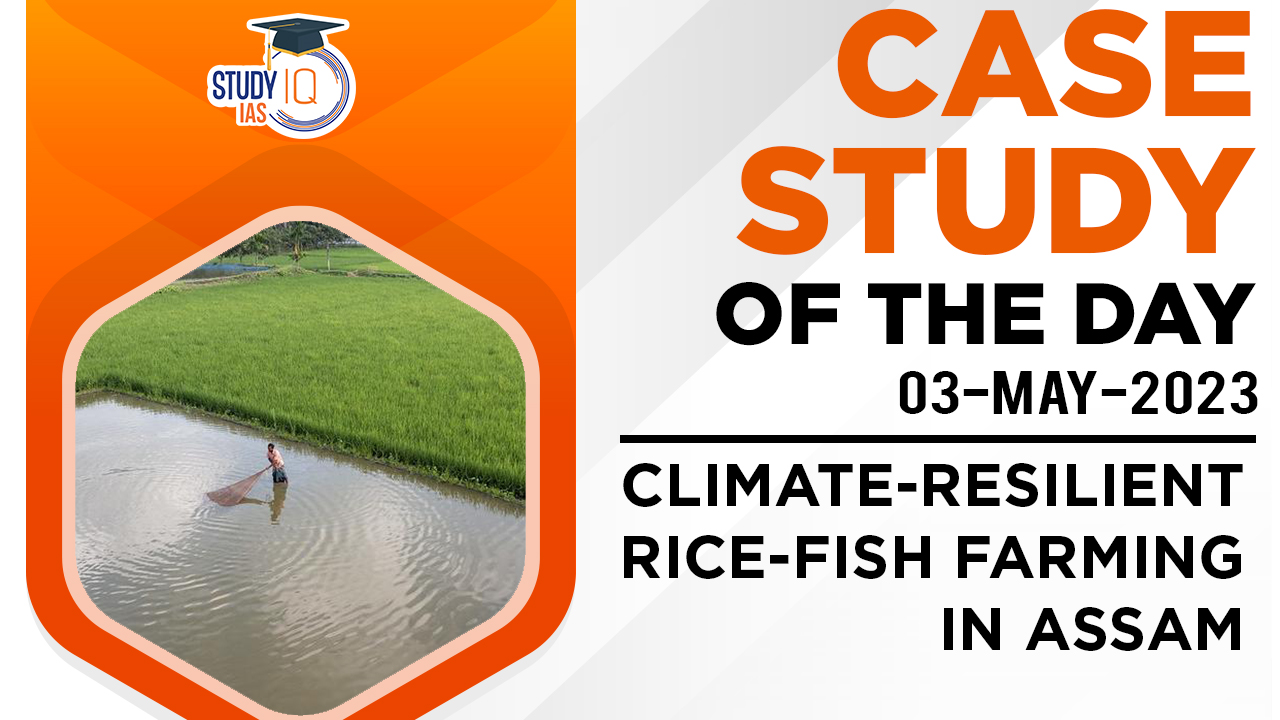Table of Contents
Climate-Resilient Rice-Fish Farming in Assam Background
This case study explores the implementation and impact of climate-resilient rice-fish farming in the state of Assam, India. Assam is highly vulnerable to climate change, experiencing frequent floods and erratic rainfall patterns, which pose significant challenges to agricultural productivity and rural livelihoods. To address these challenges, climate-resilient farming practices, such as rice-fish farming, have been adopted
The integration of rice cultivation and fish farming has emerged as a sustainable and resilient farming system to mitigate climate risks and enhance livelihoods. This case study analyzes the key components, benefits, challenges, and outcomes of climate-resilient rice-fish farming in Assam, providing valuable insights for policymakers, farmers, and researchers worldwide.
Key Components of Climate-Resilient Rice-Fish Farming
- Integration of Rice and Fish Production: Climate-resilient rice-fish farming involves the simultaneous cultivation of rice and fish in the same field or adjacent water bodies. Fish are reared in paddy fields during the monsoon season when the fields are flooded, creating an ecosystem that benefits both rice and fish production. After the rice harvest, fish are harvested, providing an additional source of income and protein for farmers.
- Indigenous Rice and Fish Varieties: Farmers in Assam traditionally cultivate indigenous rice varieties, which are better adapted to local climatic conditions and have higher tolerance to floods and other stresses. Similarly, native fish species are selected, known for their ability to thrive in flooded rice fields.
- Water Management: Effective water management is crucial for climate-resilient rice-fish farming. Techniques such as bunding, alternate wetting and drying (AWD), and community-managed water control structures are employed to regulate water levels, prevent water stagnation, and optimize conditions for both rice and fish.
Benefits and Outcomes
- Climate Resilience: Climate-resilient rice-fish farming helps farmers mitigate the adverse effects of floods and erratic rainfall. The integrated system reduces crop losses during floods, enhances water and soil conservation, and increases overall farm resilience to climate shocks.
- Increased Productivity and Income: The integration of rice and fish farming increases overall farm productivity. Fish contribute to nutrient recycling, controlling pests and diseases, and improving soil fertility, resulting in higher rice yields. Additionally, the sale of fish provides an additional income source for farmers.
- Nutritional Security: The inclusion of fish in the farming system improves household nutrition, as fish are an excellent source of protein and essential nutrients. This leads to improved food security and better dietary diversity for farming communities.


 List of Governor of States in India, Con...
List of Governor of States in India, Con...
 Daily Quiz 15 July 2025
Daily Quiz 15 July 2025
 Maratha Military Landscapes of India Add...
Maratha Military Landscapes of India Add...





















